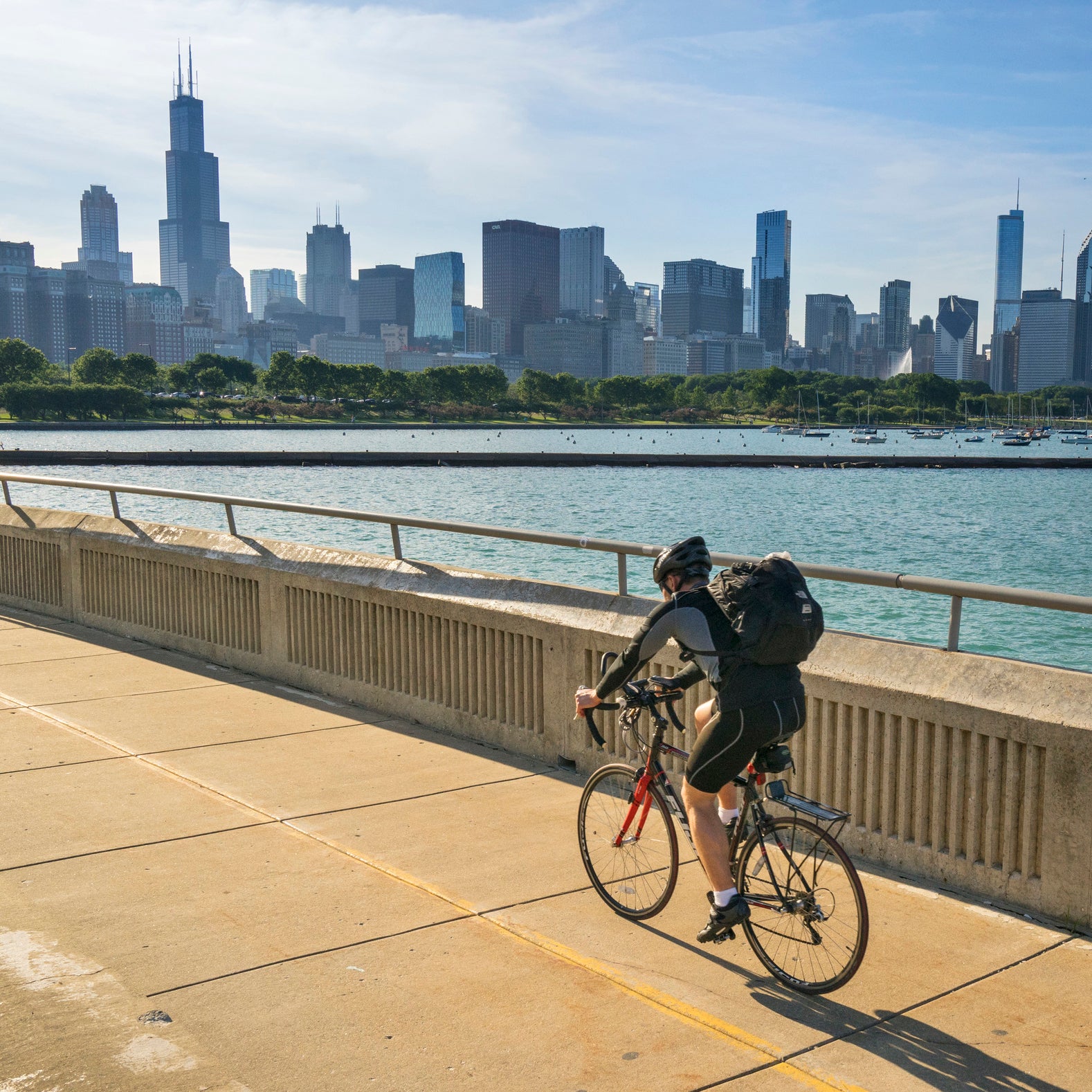You’ve heard the argument that biking to work is good for , your , and , but ditching your car for a two-wheeled model can be a hassle. We’re here to help simplify the switch, with gear and fitness tips tailored to your lifestyle.
The Urban Pro
Your Ideal Bike: —fixed-gear bikes with no freewheel and, often, no brakes other than a backward pedal stroke—enjoy popularity with the hipster city commuter but have sparked some major controversy in the cycling world. Advocates of the fixie (including many diehard and experienced commuters) will tell you that you have more control over this bike since you can’t coast without a flywheel and can more readily weave through potential obstacles in the road. Plus, fewer parts mean fewer things to potentially be stolen when your bike is racked outside the office all day.
Look the Part: Rock a merino wool base layer, especially when you won’t have time to change when you get to work. “Arguably, it’s the world’s best natural performance fiber,” says Simon Huntsman, head of R&D at . This sweat-wicking and odor-resistant material makes an ideal ride-and-work fabric—and it’s wicked comfortable. Choose a layer that’s thick enough to wear as stand-alone shirt if your office has a business-casual dress code.
Your Roadblock: Tight hammies. Single-speed bikes may look less intense than your average road bike, but they require constant leg turnover. That means you’re working your quads on the downhill almost as much as on the uphill. Incorporate a few cyclist-specific yoga poses into your daily routine to keep the hips open and hamstrings happy.
Pro Tip: Nailing down the fixie technique can be tricky. Practice on less-trafficked roads to get the hang of it.
The 9-to-Late-Night Exec
Your Ideal Bike: A , kitted with special parts for your bulky briefcase. It will fit nicely in your office or an Uber after a nighttime meeting. Maintenance is key: Regularly oil the chain and replace brake pads to keep your bike folding smoothly, says Richard Spencer, operation director at Brompton. And if you ride in the rain, wipe down your bike a towel before folding it up to prevent rust.
Look the Part: To seem like you just snuck in from a meeting over coffee, sport a sleek jacket that’s water-resistant. Something like is a great fit.
Your Roadblock: The occasional saddle sore. The folding bike design makes it harder to find the perfect fit. Your local bike shop can adjust the seat or recommend a saddle swap.
Pro Tip: You’re on a tight schedule, so keep an organized gear closet. No last-minute search for your helmet, light, or shoes, and no rolling out only to realize you haven’t pumped your tires all week.
Hardcore Roadie
Your Ideal Bike: Your racing machine—if you’re in this category, you don’t need a recommendation.
Look the Part: Travel with a that can fit your laptop without killing your aero vibe.
Your Roadblock: Making your commute count as a workout. Use red lights to practice your race starts, or practice short sprints between telephone poles. Want to do a longer, harder ride before or after work? Ask for a one-way ride from a co-worker, or look into public transit—most subways and buses are okay with bringing bikes onboard during off-peak hours.
Pro Tip: The hardest part of the commute might actually come when you get to the office. Make sure you have a basic toiletries kit stashed in your desk. It doesn’t take much: wipes, underwear, deodorant, and maybe some dry shampoo.
Broke College Kid
Your Ideal Bike: Whatever you can find on Craigslist. That said, maintain it. Pump your tires and lube your chain often. You’d rather pay for cleaning products up front than a massive repair down the line.
Look the Part: A wearable chain lock to keep your ride secure on campus. Cable locks can be great deterrents for short pit stops, but steel chains and shackles are better for full days at the office.
Your Roadblock: Staying safe in a busy college town. The best way to avoid conflict with drivers is to be predictable: Ride in a smooth, straight line when possible, and signal your turns. And be visible: “Use those lights even during the day, wear reflective clothing or vests, and wave your arm to make sure someone at a pullout can see you,” says Michael Bluejay of .
Pro Tip: Bring a snack and drink so you don’t snooze during that three-hour seminar.
The Long-Distance Commuter with Electric Assist
Your Ideal Bike: This depends. If you’re a roadie at heart, opt for an option that , with skinnier tires and a more traditional seat position. But if comfort is your priority, choose a that keeps you upright and provides more cush.
Look the Part: You’re riding long distances, so a reliable rain jacket will help prepare you for weather shifts. Before buying, test your jacket for fit by getting into cycling position to see if it will meet your in-motion needs. This incredibly lightweight (less than 100 grams) is a great option.
Your Roadblock: Swapping your bike and car for the best of both worlds can seem expensive at first, but it pays off over time. A Scottish agency recently surveyed more than 3,000 new cycle commuters and found that over the course of a month, of their paychecks as compared to when they were driving to work.
Pro Tip: Treat the e-bike as you would any other bike. Although it’s a machine, it still needs regular maintenance like chain cleaning and the occasional new tires—and an accessible charging station to avoid petering out midride.


